6 Ways the AEPS-3 Curriculum Helps Children Thrive
September 8, 2025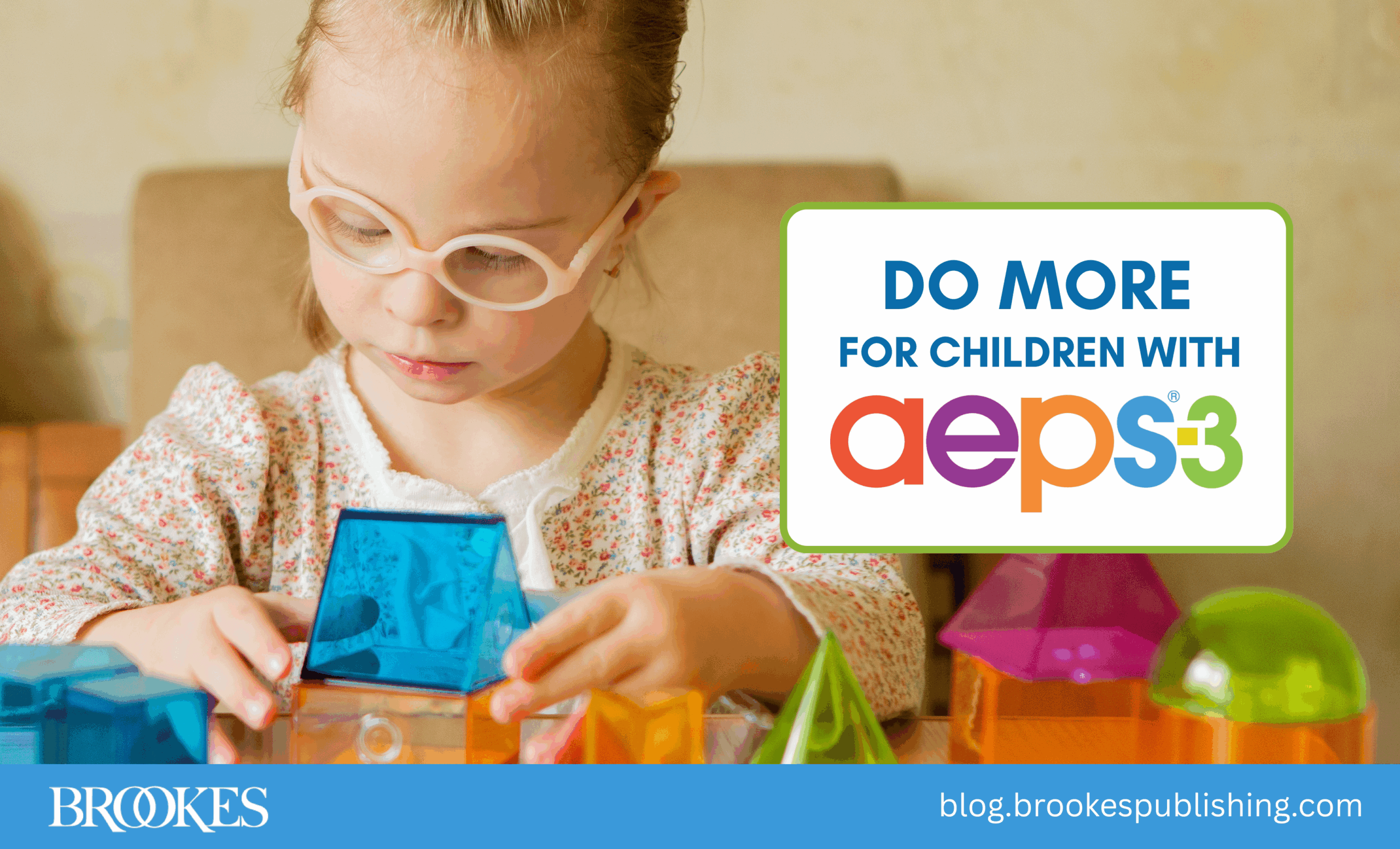
 This month we’re spotlighting the Assessment, Evaluation, and Programming System for Infants and Children, Third Edition (AEPS®-3), a widely used, seamlessly linked assessment and curriculum for young children ages birth–6. Today, discover the benefits of the AEPS-3 Curriculum and how it can help you with effective teaching and intervention for the children you work with.
This month we’re spotlighting the Assessment, Evaluation, and Programming System for Infants and Children, Third Edition (AEPS®-3), a widely used, seamlessly linked assessment and curriculum for young children ages birth–6. Today, discover the benefits of the AEPS-3 Curriculum and how it can help you with effective teaching and intervention for the children you work with.
Adapted from the AEPS-3 User’s Guide, here are six features that make this curriculum an invaluable asset to your program—and an ideal way to help all young children thrive.
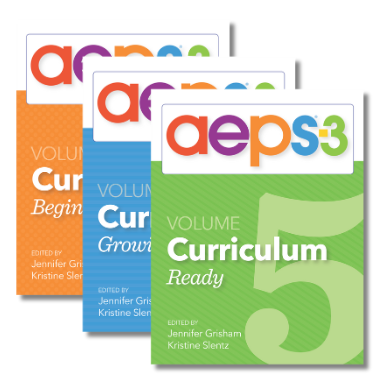 Makes developing goals/outcomes and teaching/intervention content a seamless process after assessment. Your next step after assessment with the AEPS-3 Test, this curriculum is organized into three separate volumes around children’s chronological and/or developmental ages. The AEPS-3 Test results link directly with related curriculum content, making it much easier to develop individualized goals/outcomes and teaching/intervention content. You can focus your teaching and intervention efforts on the same skills identified during assessment and embed intervention into a variety of home and community routines and activities. (See a sample Skills Matrix linking AEPS-3 Test items to AEPS-3 Curriculum activities.)
Makes developing goals/outcomes and teaching/intervention content a seamless process after assessment. Your next step after assessment with the AEPS-3 Test, this curriculum is organized into three separate volumes around children’s chronological and/or developmental ages. The AEPS-3 Test results link directly with related curriculum content, making it much easier to develop individualized goals/outcomes and teaching/intervention content. You can focus your teaching and intervention efforts on the same skills identified during assessment and embed intervention into a variety of home and community routines and activities. (See a sample Skills Matrix linking AEPS-3 Test items to AEPS-3 Curriculum activities.)
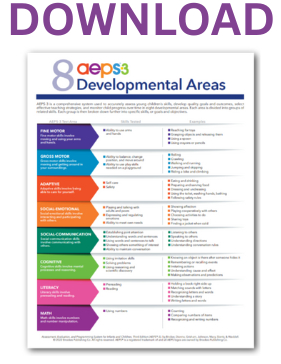
Covers the major developmental and early academic areas: Fine Motor, Gross Motor, Adaptive, Social-Emotional, Social-Communication, Cognitive, Literacy, and Math. (Here’s a parent-friendly printable handout listing the 8 areas of AEPS-3.)
 Focuses on skills that enhance children’s independence. The curriculum covers a set of skills and abilities that are essential for young children to function independently, participate successfully, and cope with the environmental demands of home and community settings.
Focuses on skills that enhance children’s independence. The curriculum covers a set of skills and abilities that are essential for young children to function independently, participate successfully, and cope with the environmental demands of home and community settings.
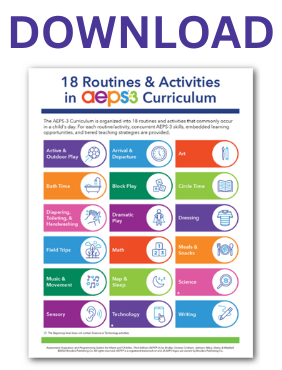 Makes teaching/intervention flexible and efficient. Most young children can receive effective teaching/intervention while participating in ongoing interactions and activities. This curriculum is divided into three universally recognized skill levels, with tiered teaching suggestions fully integrated into 18 regularly occurring routines and activities. Every routine outlines best practices at home and in classrooms for all children, strategies for providing extra help when needed, and individualized suggestions for children who need specially designed, intensive teaching/intervention and support.
Makes teaching/intervention flexible and efficient. Most young children can receive effective teaching/intervention while participating in ongoing interactions and activities. This curriculum is divided into three universally recognized skill levels, with tiered teaching suggestions fully integrated into 18 regularly occurring routines and activities. Every routine outlines best practices at home and in classrooms for all children, strategies for providing extra help when needed, and individualized suggestions for children who need specially designed, intensive teaching/intervention and support.
 Meets recommended standards. The curriculum reflects standards and guidelines for early childhood curriculum design and content as identified by professional groups such as the Division for Early Childhood (DEC). The tiered approach to teaching and intervention is also consistent with the multi-tiered system of support (MTSS) methodology used widely in public schools. These advantages make the AEPS-3 Curriculum an ideal choice for professionals to develop both effective, meaningful teaching/intervention content and tailored teaching strategies.
Meets recommended standards. The curriculum reflects standards and guidelines for early childhood curriculum design and content as identified by professional groups such as the Division for Early Childhood (DEC). The tiered approach to teaching and intervention is also consistent with the multi-tiered system of support (MTSS) methodology used widely in public schools. These advantages make the AEPS-3 Curriculum an ideal choice for professionals to develop both effective, meaningful teaching/intervention content and tailored teaching strategies.
 Outlines universal teaching strategies that can improve the quality of early childhood experiences in any setting. Strategies support high-quality instruction everywhere, whether at home, in classrooms, or in the community. The focus on specific strategies for establishing high-quality routines and activities is especially beneficial for home visits and classrooms with limited curriculum resources.
Outlines universal teaching strategies that can improve the quality of early childhood experiences in any setting. Strategies support high-quality instruction everywhere, whether at home, in classrooms, or in the community. The focus on specific strategies for establishing high-quality routines and activities is especially beneficial for home visits and classrooms with limited curriculum resources.
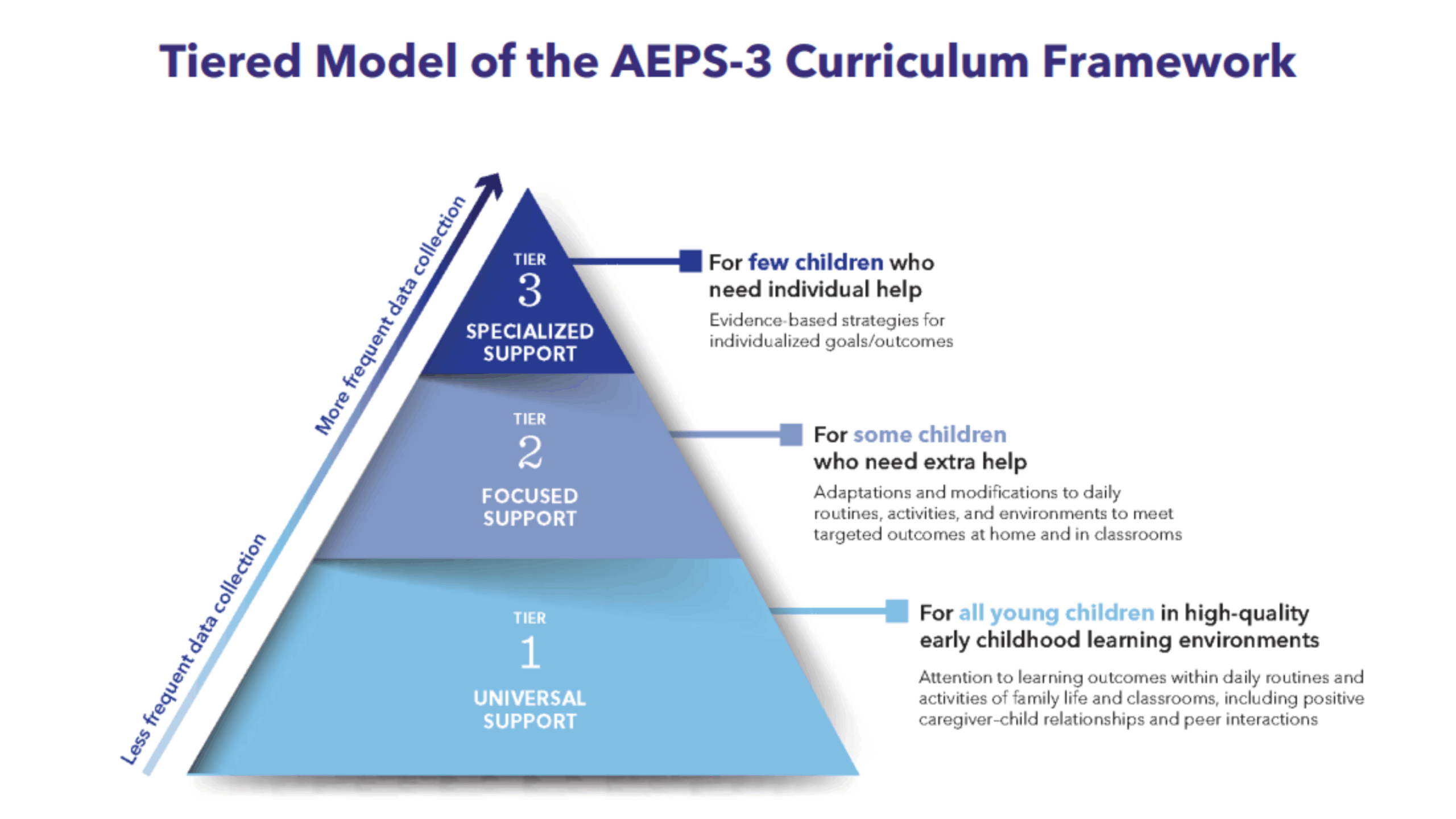 AEPS-3: a tiered curriculum that does more for every child.
AEPS-3: a tiered curriculum that does more for every child.
The tiered AEPS-3 Curriculum is your program’s best way to help young children learn specific skills and become successful participants in everyday activities. To see inside the AEPS-3 Curriculum, download these excerpts from Volume 3: Beginning, Volume 4: Growing, and Volume 5: Ready.
Explore AEPS-3
- VIEW THE SLIDE DECK to learn about AEPS-3 and how it works
- GET A FREE DEMO of AEPSi, the online management system for AEPS-3
- ANSWER YOUR QUESTIONS with this AEPS-3 FAQ
- DOWNLOAD A SAMPLE of the AEPS-3 Test items
- SIGN UP for the AEPS Newsletter for the latest news & updates



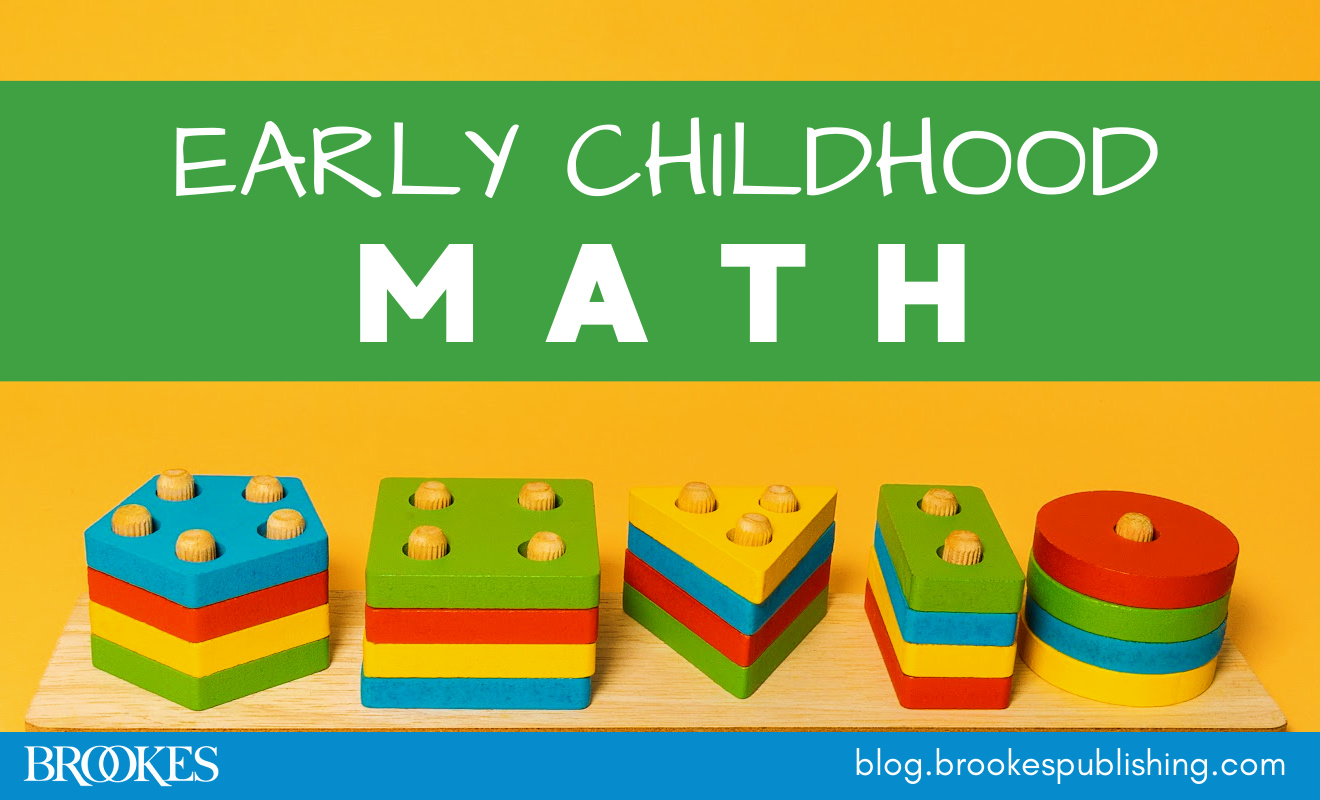
Write a Comment
Your email address will not be published. Required fields are marked *
Post a Comment